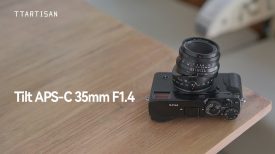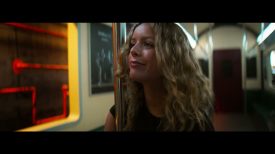By site editor Dan Chung:
Okay, so we’ve brought you all the new gear at NAB 2015: the lights, the lenses, the cameras and so much more. But once you have them all, how do you use them to create a film that people will want to watch? We brought together a panel of experts from across the industry on our Teradek live show, to share their secrets.
Hussain Currimbhoy is one of those you need to impress if you want to get your film into Sundance – he’s a programmer there and was previously at Sheffield Doc/Fest. Barbara Davidson is a Pulitzer Prize-winning visual journalist at the LA Times, who has travelled the globe working in both stills and video. Rodney Charters is best known as DP of 24, Dallas, Shameless and other big TV dramas, but continues to work as a documentary filmmaker too. Finally, Vincent Laforet was a Pulitzer Prize-winning New York Times photojournalist before making waves with the first Canon 5D MkII video, Reverie; he is now a Hollywood director. While the discussion focused on documentaries, much of their advice was applicable to other genres. Here’s what they had to tell us:
1. Follow your heart:
Barbara: “Tell a story that you feel passionate about. There are going to be so many highs and lows to try to tell that story and to make it come together, that if you’re not really passionate about it, you may fall by the wayside…Be really passionate about something that you really want to tell and that will carry you through all the dark times that you will experience making a film.”
2. Pick the gear for the job:
Vincent: “There is no magic formula. Some content needs beautiful light. Some needs natural light. Some needs the raw ugly light that’s there.”
Barbara: “The work that I do is very intimate – a lot of social issues documentary. The less bells and whistles that I have around me [the more it] enables me to work more seamlessly in the community I’m documenting…But we’re innovators. It’s eye-candy…these tools help us make things look very sexy.”
3. Travel light: take only what you need:
Vincent “One of the biggest lessons I learned when I started in film making was that I brought every piece of kit I could find. It killed my assistants, it killed me….We couldn’t move; it took us forever to build cameras. I realised as a story teller I was killing myself….One of the core lessons [for me has been] is that it’s not the images you make; it’s the ones you don’t make. If you’re wasting your time taking mediocre images you never get to the great images. So you have to learn to say, No, no, no, no – wow….It’s the same thing with gear: I’m not going to take this. I’m not going to take that.”
4. The kit is only as good as the operator’s knowledge of it:
Rodney: “If you are going to get a kit you have to understand how to run it. You have to know how to run it in the dark with your eyes closed.”
5. Don’t try to go it alone:
Vincent: “We have lost the art of the editor….And it’s a skill that amid all this content is absolutely necessary: that one person who will look at you and say, What in the world are you thinking spending one year of your life or more on this utterly uninteresting subject?…The biggest thing you learn from being a one person band or a photojournalist moving into documentary and working with a larger crew is the incredible value to having multiple layers of advice and skill…Remember: there’s a reason there’s this entire crew around you – and it will make you a better storyteller and filmmaker.”
6. Respect your subject as well as your team:
Hussain: “Treat your subjects with dignity… Treat them right and don’t be like: I’m looking through a cage at the zoo. Respect the subject and the audience will do the same – and you got ‘em.”
7. Keep it simple:
Rodney: “If you’re starting out, you should choose to do something in a minute…It’s manageable. It’s good training… You are dissecting your story to its minimum. And that will help you finish it…and you’ll have more success with that too, I think.”
Hussain: “The big mistakes people make – [their films] are just too long. And life is too short. They don’t know how to cut it down and make it punchy – because when you are watching it on your phone, you want to be grabbed and reach the heart of the story quickly.”
8. Make the film for you, not for a festival:
Hussain: “Make the film you want to make; make the film that you want to see. Don’t make it for festivals…Make the film that you would pay money to see in the cinema…And when you’ve made it connect with your industry and your network – the doc community is very tight; very supportive. Talk to them: where should I enter this film? Where will I get the best hits?…And when you get into one – you have got to work it.”
9. Create a brand, not just a film:
Barbara: “It’s important for the creator to have their own brand. I’m @photospice on instagram and Twitter and Barbara Davison on Facebook…The key to get work out nowadays is all social media. You have to be really strategic about that and really surgical. It takes so much effort to hone your numbers because its worth it: you are creating your own audience in the end – you are creating your own distribution…That’s the number one way to get your work seen.”
10. If at first (second, third) you don’t succeed:
Hussain: “Don’t give up. Because everyone’s going to be telling you: no, it’s not going to work, no, you can’t afford it, no, I’m not giving you the access. Do. Not. Give. Up.”





